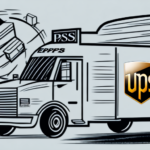Introduction to Amazon's Supply Chain Optimization
Amazon has cemented its status as a global e-commerce titan through its meticulously optimized supply chain. This sophisticated infrastructure enables Amazon to deliver products swiftly and reliably to millions of customers worldwide. Managing such a complex supply chain involves overcoming numerous challenges and continually deploying innovative strategies to enhance efficiency. This article will explore the fundamentals of Amazon's supply chain, the challenges it faces, and the strategies it employs to optimize performance.
Understanding the Foundations of Amazon's Supply Chain
Product Sourcing and Manufacturing
Amazon's supply chain begins with the strategic sourcing of products from a vast network of manufacturers and suppliers across the globe. By leveraging economies of scale and negotiating favorable terms, Amazon ensures a steady supply of products to meet consumer demand efficiently.[1]
Advanced Technologies in Inventory Management
Incorporating technologies such as artificial intelligence (AI), machine learning (ML), and robotics, Amazon enhances its inventory management processes. These technologies facilitate accurate demand forecasting, automated warehousing, and efficient order fulfillment, reducing operational costs and improving delivery times.[2]
Key Challenges in Managing Amazon's Supply Chain
Inventory Optimization
Balancing inventory to prevent stockouts and overstocking is a perpetual challenge. Amazon's implementation of just-in-time (JIT) inventory practices and predictive analytics helps mitigate these issues, ensuring optimal stock levels.[3]
Supplier Coordination and Quality Control
Managing a diverse array of suppliers necessitates robust coordination and stringent quality control measures. Amazon employs comprehensive supplier assessments and continuously monitors performance to maintain high product standards.[4]
Logistics and Transportation Management
Ensuring timely and cost-effective transportation of goods is critical. Amazon's investment in its own logistics infrastructure, including Amazon Air and its fleet of delivery vehicles, enhances control over the shipping process and reduces dependency on third-party carriers.[5]
Supply Chain Visibility and Transparency
Maintaining visibility across the supply chain is essential for efficiency and accountability. Amazon utilizes real-time tracking systems and data analytics to monitor supply chain operations, enabling proactive management and swift issue resolution.[6]
Strategies for Optimizing Amazon's Supply Chain Performance
Technological Innovations
Amazon leverages cutting-edge technologies such as AI, ML, and robotics to streamline supply chain operations. Automation in warehouses accelerates order fulfillment, while predictive analytics enhances demand forecasting accuracy.[7]
Efficient Inventory Management
Through the use of JIT inventory systems and vendor-managed inventory (VMI) strategies, Amazon minimizes excess stock and reduces storage costs. These approaches ensure that inventory aligns closely with actual demand.[8]
Lean Management Practices
Implementing lean management techniques allows Amazon to eliminate waste and optimize processes. Practices such as value stream mapping and continuous improvement initiatives enhance overall supply chain efficiency.[9]
Data-Driven Decision Making
Data analytics plays a central role in Amazon's supply chain optimization. By analyzing vast amounts of data, Amazon identifies trends, predicts demand patterns, and makes informed decisions to enhance supply chain performance.[10]
Sustainability and Ethical Practices in Amazon's Supply Chain
Responsible Sourcing
Amazon is dedicated to responsible sourcing, ensuring that its suppliers adhere to ethical labor practices and environmental standards. Regular audits and compliance checks are conducted to uphold these standards.[11]
Reducing Environmental Impact
With initiatives like the Climate Pledge, Amazon aims to achieve net-zero carbon emissions by 2040. Efforts include investing in renewable energy, optimizing transportation routes, and utilizing sustainable packaging materials.[12]
Ethical Supply Chain Management
Beyond environmental sustainability, Amazon also focuses on ethical supply chain management by eliminating forced labor and promoting fair wages among its suppliers.[13]
Future Trends and Innovations in Supply Chain Optimization
Blockchain Technology
Blockchain offers enhanced transparency and traceability, ensuring the authenticity of products and securing transactions within the supply chain. Amazon is exploring blockchain to bolster its supply chain integrity.[14]
Autonomous Delivery Systems
Amazon is advancing the use of autonomous delivery systems, including drones (Amazon Prime Air) and self-driving vehicles, to expedite delivery times and reduce operational costs.[15]
Enhanced Sustainability Measures
As sustainability becomes increasingly vital, Amazon continues to innovate its supply chain to minimize environmental impact. This includes expanding the use of electric delivery vehicles and increasing reliance on renewable energy sources.[16]
Conclusion
Amazon's success in e-commerce is underpinned by its highly optimized supply chain, which effectively integrates advanced technologies, robust management practices, and a commitment to sustainability. By addressing key challenges and continuously innovating, Amazon maintains its competitive edge and ensures consistent, reliable delivery of products to its global customer base. As the e-commerce landscape evolves, Amazon's adaptive strategies and forward-thinking initiatives will continue to set the standard for supply chain excellence.




















